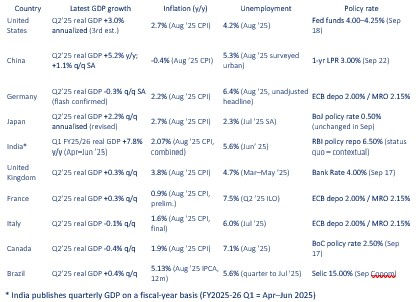Bulk Carrier Decarbonisation
- Mark Williams

- Sep 21, 2021
- 4 min read

Bulk carrier owners have enjoyed a fabulous twelve months. Around the world, governments have responded to the economic disruption caused by Coronavirus by throwing monetarist dogma out of the window and loosening fiscal policy significantly. In other words, they are trying to spend their way out of an economic slump.
This has largely worked so far, with a V-shaped recovery in construction, infrastructure and manufacturing around the world. In fact the recovery has been so steep that supply chains have struggled to keep up. While this has led to unheard of levels for container ship freight rates and time charter rates, the bulkers, which carry the raw materials for this boom, have enjoyed their best freight market since the boom of 2005 to 2008 which was caused by supercharged economic growth in China.
The possible collapse of Evergrande, China's biggest real estate developer, may be causing jitters in stock markets but so far the bulker freight market remains unperturbed. The BDI rose 29 points to 4,304 on 20 September. If Evergrande is the first domino in a chain to fall, then China may experience something like the credit crunch of 2004-05, when a slowdown in GDP growth there took the wind out of commodity and freight market sails.
The consequence of that however was a slow down in ordering of new ships and a big economic stimulus from the Chinese govt, led in part by preparations for the 2008 Olympics in Beijing. That was enough to light a fire under bulker markets - one I called in May 2005 at the HSBC Shipping Event at Lagonissi Resort near Athens. Later that day, some of us removed to TGI Friday's in Glyfada to enjoy the Miracle of Istanbul Champions League Final. Quite a day. Anyway, this time around, there is no sign yet of a bulker market collapse and perhaps that possibility won't materialise due to restrained supply growth.
Liner companies have spent some of their profits on newbuildings – nearly three hundred this year alone, totalling 2.7 million TEU. This has been a box ship contracting bonanza for the ages. But only around a quarter of those newbuildings are being constructed with engines that can burn alternatives to fuel oil or diesel oil, and in most cases the alternative is LNG, still a hydrocarbon and by itself incapable of meeting even the IMO’s 2030 ambitions for green house gas emissions reduction.
Bulk carrier owners have by and large been far more disciplined about contracting new ships. One bulk carrier owner told me this week that there is no point in ordering new ships as modern second hand vessels are still cheaper. Only when newbuildings become the only way to acquire value in the asset market will the owners rush back to the yards, said the owner.
In fact, in the year to date, we have recorded 208 bulk carrier newbuilding orders. Just over 25 per cent of these are being built in China for Chinese customers. Just 27 ships have dual-fuel LNG engines. All of these LNG-fuelled bulkers are on order at New Times Shipyard in China.
These include eight Newcastlemaxes for Eastern Pacific Shipping, all well-publicised on this website and elsewhere. Three more dual-fuel LNG bulkers, mini-Capes of 108,000 Dwt, are on order for H-Line, the former dry bulk division of Hyundai Merchant Marine from South Korea.
The list significantly includes twelve (including four options due for declaring) dual-fuel LNG Newcastlemaxes for Himalaya Shipping, a new venture led by Tor Olaf Troim, known as the founder of 2020 Bulkers, the chairman of Golar LNG and a right-hand man of Norwegian shipping magnate John Fredriksen. Himalaya was founded only in June 2021 and in July raised USD 30 million on the Norwegian OTC market to fund the down payment on its USD 820 million order.
Thus far, bulker owners are displaying extreme caution when it comes to renewing their fleet to meet the IMO’s targets for emission reduction. Perhaps charterers will eventually force the issue via initiatives like the SeaCargo Charter, which aims to promote low-carbon shipping of bulk as well as other cargoes.
Perhaps bulk trade will be disrupted by decarbonisation through the decimation of demand. Roughly thirty per cent of all bulk trade is in coal and eighty per cent of coal trade is in thermal coal. This could all be lost if renewables receive further support from governments while financiers stop investing in coal mines.
Possibly the introduction of the IMO’s Energy Efficiency Existing Ship Index (EEXI), to be enforced from 1 January 2023 on all existing ships over 400 Gross Tonnes, will start to force even quite young ships to the beaches if their owners refuse to invest in upgrading them. But will the EEXI be workable or enforceable? The IMO doesn’t enforce its conventions, its member states do. How many will feel sufficiently wealthy to prioritise policing shipping emissions over other requirements like health, defence and education?
The EU will push shipping into its ETS from January 2023, with a four-year phase in. Could the high and rising price of emission allowances force older ships to stop trading altogether? Or could an IMO carbon levy on fuel oil prices be enough to make bulker owners decide to renew their fleets? Perhaps the owners will simply pass increased costs onto their charterers and keep their fuel oil engined vessels running for as long as they can.
As far as decarbonisation goes in the dry bulk markets, the big questions remain unanswered: What will happen to bulk carrier trade as the global economy decarbonises? And when will bulk carrier owners seriously begin to renew the fleet?
Have your say by completing this 10 question survey, which should take less than two minutes of your time. I will publish the results in a few weeks’ time.



Comments